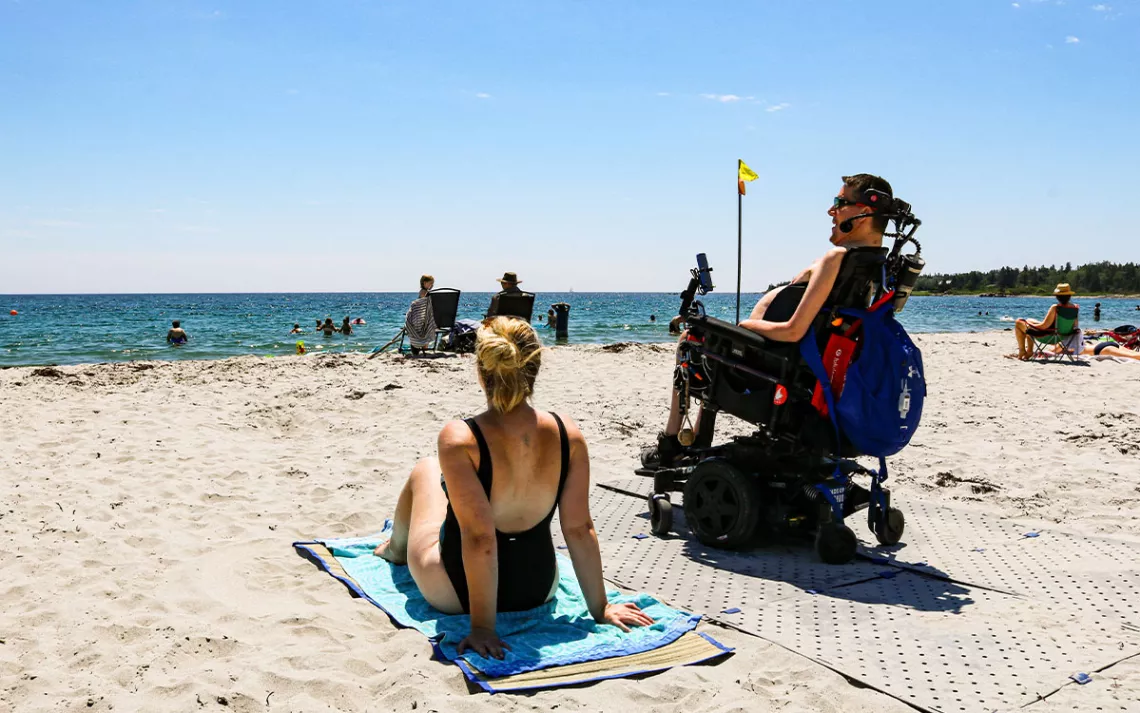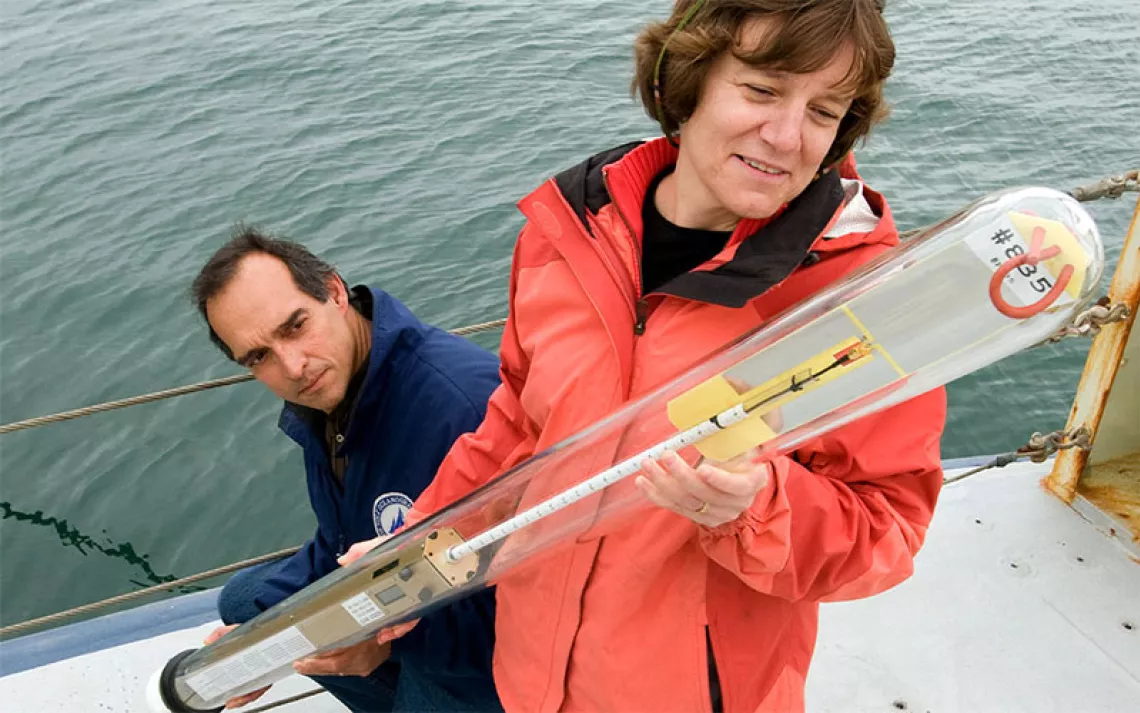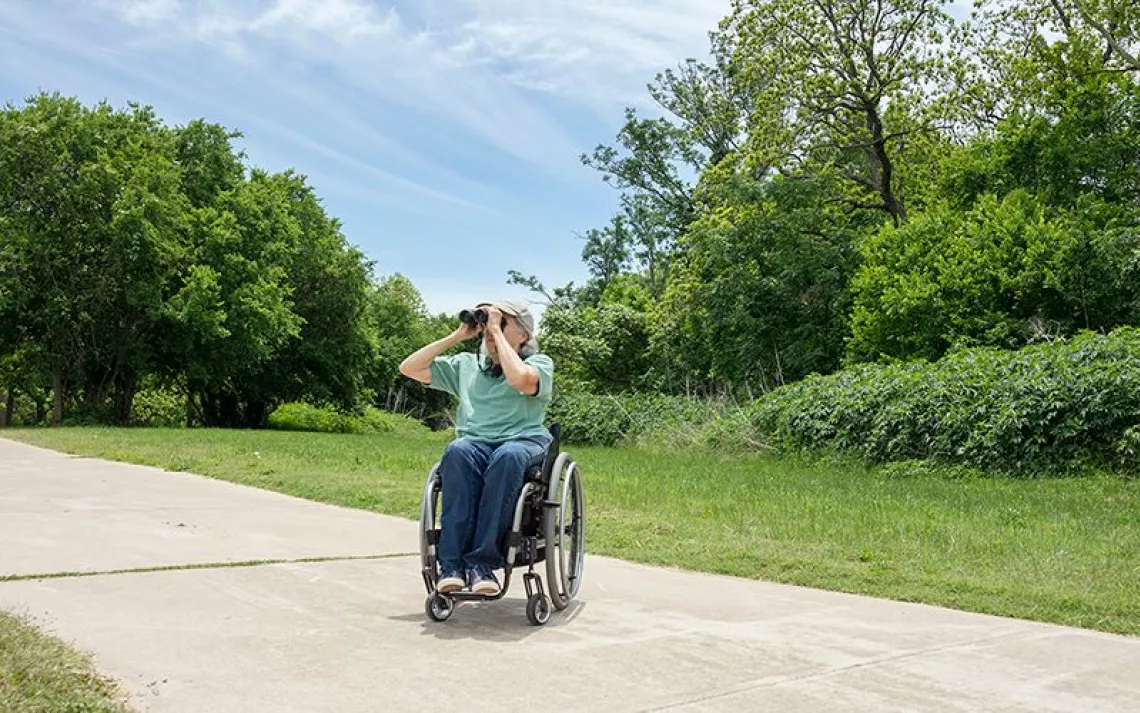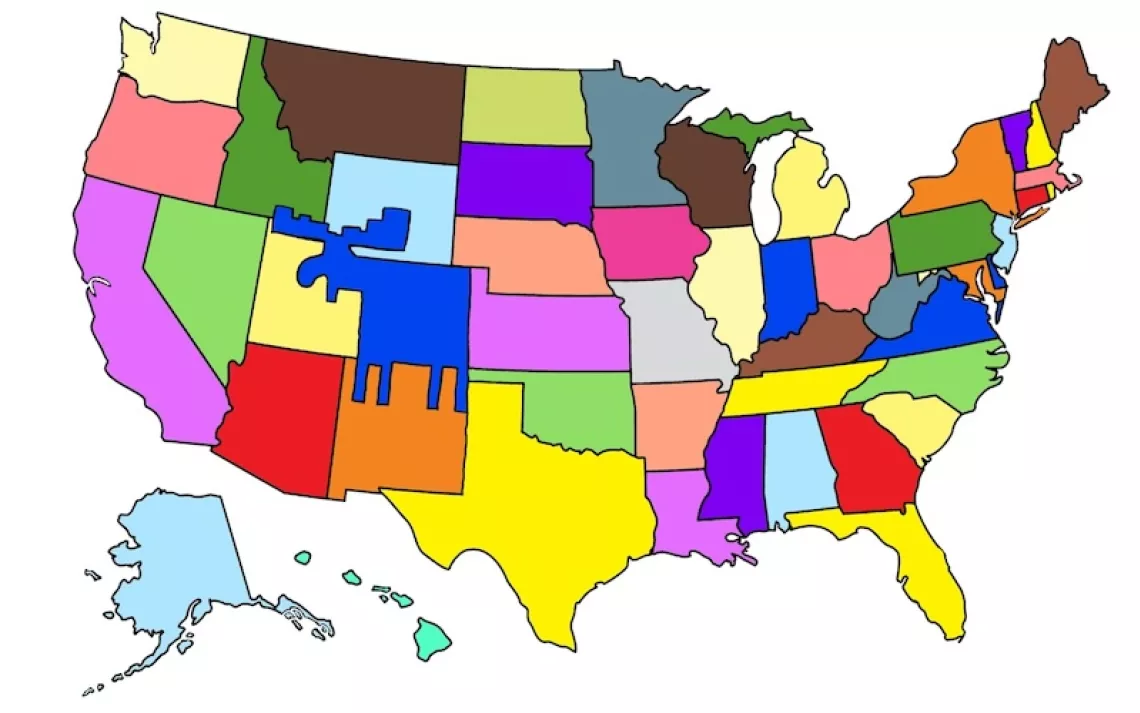Accessibility Technology Ensures Everyone Gets a Day at the Beach
The last decade’s advances in wheelchairs and sand mats allow people with disabilities more and better access to all the beach has to offer

New accessibilty tools, such as modular mats like Access Trax, allow wheelchair users to get much closer to the water, and stay in their own chairs, than older types of beach-access mats allow. | Photo courtesy of Kelly Twichel/Access Trax
I first encountered a beach wheelchair the summer before middle school when my family was on our annual trip to Bethany Beach, Delaware. I didn’t know it yet, but Oma, my maternal grandmother, was dying. That summer she had been diagnosed with liver cancer, detected only after an unrelated bad fall had called for CT scans that ended up showing a mass on her liver. She was too frail to survive an operation to remove the tumor, so while chemo appointments were scheduled, the family beach trip persisted.
Every summer before, three generations of the Hamosh-Dietz-Taddei clan had slathered on sunscreen and shimmied into bathing suits before making the meandering half-mile walk around the marshes, from our house to the beach access point. But that summer we weren't walking to the beach.
Instead, every morning we divided ourselves into the minivan and Tahoe and drove 20 minutes to the wheelchair-friendly access ramp to use the special beach wheelchair we had rented for the week: a very basic model, blue with big, gray wheels.
This style of chair offers no way for the user to propel themselves. Family members helped transfer Oma from the car to the wheelchair and then pushed her from the parking lot out onto the sand. The rented wheelchair also wasn’t equipped to go into the water. We joked that Oma was part cat and thought water was for looking, not touching.
While the basic model beach wheelchair was fine for my family, who had the rental budget, trunk space, and people power for transport, Oma's experience is not a good representation of what works for wheelchair users who are more independent or adventurous.
In the US, an estimated 3.3 million people use a wheelchair, and less than one-third are over the age of 65. The Americans with Disabilities Act became law 34 years ago, requiring accessibility accommodations be made available in places the public uses, yet for a country with more than 95,000 miles of shoreline, beach accessibility remains difficult to navigate and find information about.
Cory Lee writes the popular accessibility-focused travel blog Curb Free With Cory Lee in part to fill such information gaps. Lee has required a wheelchair since birth, and views his custom-powered chair as an extension of his own body. As a travel blogger, he made the decision a few years ago to purchase his own powered all-terrain wheelchair, which he says has been a “life changing” decision. The chair, a Magic Mobility Extreme X8, “completely opened up beaches for me and made me really fall in love with going to the beach again,” said Lee.
Prior to purchasing his chair, Lee had to extensively research each of his potential destinations and check their accessibility features. Some municipalities and resorts offered beach wheelchair rentals but with varying degrees of autonomy for the wheelchair user—as with Oma’s experience. Most beach wheelchairs on the market are not powered, and due to the wheel design, require another person to steer them.
Over the last decade, however, more nimble all-terrain wheelchair rentals have become much more common, with some beaches and parks even keeping a fleet of powered all-terrain wheelchairs on hand. These wheelchairs provide users autonomy and the ability to traverse the beach freely, but most can’t go in the water.
By contrast, amphibious beach wheelchairs, available at some resorts for rent, can enter the water. They are designed a bit like a recumbent bike—with one wheel in the front and two positioned at the back—and sit lower to the ground than other types of wheelchairs. Those features, especially the low seat, mean the chair and user can float in fairly shallow water. The drawback, however, is that amphibious wheelchairs are not powered, and due to the wheel placement for floating, require another person to push them.
Some beaches make themselves accessible not by offering beach wheelchairs but by supplying beach access mats instead. Often blue, and made of a sturdy but flexible material, these mats allow wheelchair users to traverse sand while staying in their own chairs. But “so often those beach access mats at different destinations, they don't go close enough to the water,” said Lee. “They're pretty far up on the sand.”
Offering wheelchair users the ability to change the path of their access mats to accommodate the different tide levels was the inspiration behind Kelly Twichel’s company Access Trax.
While she was in grad school for occupational therapy, Twichel and a partner received an assignment to design and create a prototype for a piece of adaptive technology. Having noticed the wavy surface of beach mats and seen many buried beneath the sand in her native California, Twichel decided to see if she could improve on the design.
Access Trax are solid and light weight, and able to be folded up for storage or rearranged for events. Twichel didn’t realize the full implications of her work until years later, when an adaptive surfing competition in her home town of San Diego used her modular mats. “I begged my parents to come because I wanted them to see what I created,” says Twichel, who witnessed at a young age how much a disabling event could overturn someone’s life. When she was 12 years old, she awoke to sirens to find her mother had suffered a “massive” stroke.
During the competition her mom nonchalantly told her that this was the first time she’d been to the beach since she had her stroke. “It took everything in me not to cry just standing out there in public next to her because I didn't realize that,” said Twichel, tearing up over Zoom as she recalled the event. Twichel’s mother, who died several years ago, regained the ability to walk, but struggled with limited balance for the rest of her life after the stroke.
Whether it’s mats or specialized wheelchairs, these resources make beaches accessible not only to casual beachgoers but also to wheelchair users who are competitive athletes. At 21, Quinn Waitley became a professional adaptive surfer and a world champion in her category. Waitley has been surfing competitively for almost a decade now, and also lives with cerebral palsy. As for specialized gear, Waitley says, “Honestly we need all of it.” While working for the City of Coronado in California, she witnessed the breakage of the last municipal beach wheelchair, which she says the city is having a hard time getting fixed. Providing both rentable wheelchairs and mats or Access Traxs keeps beaches at least partly accessible even when one adaptive measure isn’t available.
Price remains the main barrier to utilizing these resources when they are available, however. While many places now offer beach mats or manual beach wheelchairs for free, the kind of powered beach wheelchairs and amphibious chairs that afford a user more autonomy and greater access to all that a beach has to offer are harder to find without renting.
For planning a trip to the beach with accessibility in mind, more and more resources are becoming available. In addition to Lee’s blog, the California Coastal Commission maintains an interactive map of beaches with beach wheelchairs available; Travel & Leisure has rounded up beaches throughout the United States with varying levels of accessibility to help people plan vacations; and private rental companies, such as Sand Helper, also offer interactive maps showing where beach wheelchair rentals are available. In all cases, be sure to contact both the rental service (if you are using one) and your destination’s department of parks and recreation or visitor’s bureau directly to ensure that the beach is actually accessible, and no information is out of date.
Beach accessibility technology has improved noticeably since my family took our vacation with Oma. Still, I’m grateful for even the rudimentary wheelchair we had access to. It meant Oma got to soak up the sun with us at the end of her life. She wasn't confined to the house all day, and she got one last summer to watch the little ones make sandcastles and delightedly show off all the sand fleas they caught. Oma was too sick to go to the beach the following summers, and we lost her in the fall of 2011, but I will always remember lying on the hot sand at her feet that last summer, as we chatted between swims.
 The Magazine of The Sierra Club
The Magazine of The Sierra Club






